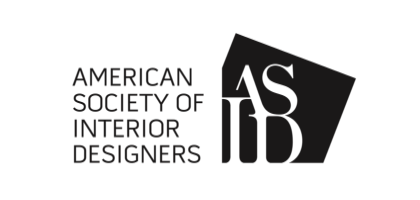2023 South Regional Conference
Conferences & Events
Competitions + Grants
Opportunities
Membership
Career Center
Career Center
Conferences & Events
Competitions + Grants + Awards
Membership
© 2024 Interior Design Educators Council
2023 South Regional Conference
Atlanta is a city connected deeply to its social justice past while influencing the future. Known for its Southern hospitality and charm, it offers visions of a progressive future and boasts some of the most cutting-edge institutions in the country, from the public sector to the medical, technological, and design sectors, among others. We warmly invite you this October to the Atlanta campus of the Savannah College of Art and Design to connect with your higher education peers, practitioners, and industry partners and influence the future of design and design education. Welcome to Atlanta, y’all!
The conference invites individuals (scholars, graduate students, and undergraduate students) to submit abstracts that contribute to the body of knowledge of interior design and interior design education.
Scholarship topics may be based on pedagogy, history, theory, design practice, interdisciplinary collaboration, and case studies, representing qualitative and quantitative research. Presentations reflecting innovative teaching approaches or methods and professional/creative work related to interior design are also welcome. Abstract presentations may be in the form of a presentation or panel and may be completed by one or multiple authors.
While abstracts are welcome on all topics related to the field of interior design, this conference encourages submissions that support ideas that address the conference theme.
Collaboration: Build relationships with other interior design educators, practitioners, and students.
Networking Spotlight: This is the place to meet with others and/or mentors – whether in a smaller group, 1 on 1 over a coffee, in a session, during a networking event.
Research Opportunities: The conference provides opportunities for educators to present their research work and gain feedback from peers. This can be beneficial for those seeking to further their research interests or exploring new avenues of learning.
Continuing Education: Attending the IDEC regional conference can also provide opportunities for attendees to earn continuing education units (CEUs) required for maintaining professional certifications or licensure.

She is a leading expert in Gerontology, with a specific focus on longevity, caregiving, and fraud prevention. Abramson received a Doctorate in Gerontology from the prestigious University of Southern California and was trained in Cybersecurity Fraud Prevention at Harvard University. Her sought-after insight and experience have led her worldwide as an inspiring speaker, author, spokesperson, corporate trainer, consultant, and entrepreneur.
Deadline to Register: Thursday, October 19th, 2023 | |
|---|---|
Member | $145 |
Non-Member | $145 |
Student Member | $75 |
Student Non-Member | $75 |
Thursday, October 19, 2023
Informal Networking
@ Host hotel: Kimpton’s “The Shane” Hotel Either the Hartley or the Aveline bar (TBD)
1340 W. Peachtree St.
Atlanta, GA 30309
Friday, October 20,2023
Check-in
SCAD Atlanta Forty event space
40 SCAD Way NW
Atlanta, GA 30309
0.4 miles from Kimpton Shane
Continental Breakfast hosted by sponsor
Location: SCAD Forty event space
Introduction
Tony Purvis
Associate Chair of the Department of Interior Design (SCAD Forty event space)
Welcome
Andrea Johnson
Associate Dean of the School of Building Arts
Keynote Speaker
Alexis Abramson, Ph.D.,
Specialist in Aging (introduction by sponsor)
Connections and Influences
Dr. Alexis Abramson is a leading expert in Gerontology, with a specific focus on longevity, caregiving, and fraud prevention. Abramson received a Doctorate in Gerontology from the prestigious University of Southern California and was trained in Cybersecurity Fraud Prevention at Harvard University. Her sought-after insight and experience have led her worldwide as an inspiring speaker, author, spokesperson, corporate trainer, consultant, and entrepreneur. Dr. Alexis is well-known as an Emmy and Gracie award-winning journalist who has appeared frequently as an on-air expert for NBC’s Today show, CNN, CBS, FOX, MSNBC and many other media outlets. Dr. Alexis is the recipient of numerous professional accolades, including Working Woman Magazine’s General Entrepreneurial Excellence Award, Atlanta Small Business’ Person of the Year Award, 40 Under 40 Award, American Society of Aging’s Outstanding Business Award, and many others.
Break
Guided Walking Tour of SCAD Atlanta campus points of interest ending at main building for lunch.
Description forthcoming. To include the new SCAD 44 and 45 buildings, SCAD Fash museum with current exhibitions, and Dept. of Interior Design.
[Potentially also the Digital Media Center for the Volume extended reality film/tv set and Studio A (tv set designed by interior design students) if time and transportation allow. This could also instead be a potential choice for a post-wrap up Saturday event.]
End at The Hub dining hall adjacent to the Dept of Interior Design in the Main Atlanta campus building.
Lunch at the Hub dining hall
Day 1
Global Perceptions of Space: The interior designer’s role
Erica Bartels & Ansley Chloe Elliott
Interior designers can employ proxemic data as it relates to cultural dimensions of global populations in order to design for enhanced inclusivity in commercial space plans.
Exploring Barriers to Creative Scholarship Output in Interior Design Education
Anna Ruth Gatlin
This poster explores barriers to creative scholarship generation and submission.
Enhancing Experiential Learning Through Collaborative Studio
Kyoungim Park & Selena Nawrocki
Two instructors developed experiential learning activities with building renovation projects for the music department of a university and a regional bowling center within multi-disciplinary collaboration.
Early Grade School Classroom Design and The Prevention of Alcohol Use Disorder (AUD)
Campbell Shepherdson
The Impact of Early Grade School Classroom Design on The Prevention of Alcohol Use Disorder (AUD)
Exploring Academic Social Space Design for College Students Who Have Experienced Trauma
Anna Ellis
The purpose of this research is to investigate the spatial and design needs of college students who have experienced trauma that may benefit from using academic social spaces.
Activating Public Life Through Street Furniture
Allie Miller
A sustainable approach to seating design and community engagement in Nashville, TN
Scholarship Presentation
Day 1: Track 1
Connected and Engaged: An Asynchronous Interdisciplinary Service-Learning Framework
Beth McGee & Ryan Couillou
Interdisciplinary service-learning can be challenging, but this framework helped to support asynchronous group work.
Enhancing Knowledge of Provincial Codes/Regulations within International Design Projects
Selena Nawrocki & Kyoungim Park
This study is focused on enhancing students’ international perspective and understanding of cultural diversities.
Student Outcomes CIDA Standard 4 Global Context for Programming Phase of Studio Courses
Johnnifer Brown
The purpose of this research is to align CIDA’s Global Context 4 with a longitudinal study focus on Programming in a Studio Course.
The Effects of Game-Based Learning on Collaboration in a Design Studio: An Empirical Study
Ying Yan
As a case study in game-based learning, specifically educational escape rooms, this presentation will offer conference attendees an opportunity to explore the potential of GBL to enhance collaboration and improve learning outcomes in interior design education.
Tales from two cities in Artificial Intelligence implementation in design courses
Daniel Ronderos-López & Nicolas Pinzón
AI implementation in design courses in two different contexts.
Rolling the Dice on Good Design: adding chance to the assignment parameters
Laurl Self
Adding analog gamification and controlled chance in an interior design project provides stronger engagement, positive risk-taking, and challenge for the Generation Z undergraduate.
Break/vendor mall open
Scholarship Presentation
Day 1 : Track 2
Impact of residence hall design on mental health and wellbeing of students in India.
Riya Garg & Ricardo B Navarro
Students’ mental health and overall well-being are significantly impacted by the built environment of residence halls.
Creating a better living environment for children with ASD
Georges Fares
The presentation will focus on the underrepresentation of individuals with autism Spectrum Disorder (ASD) in the planning and designing of interior and architectural spaces, and the need to address their unique needs through adaptable design solutions, highlighting theories such as therapeutic Environment theory, Privacy and control Theory, and Environmental Preference Theory, and presenting a prototype of a modular and adaptive system designed to positively influence the behaviors of individuals with ASD.
Adapt the Educational Environment for Autistic Children’s Social and Emotional Needs.
Joyce Serrano & Ricardo B Navarro
The research focused on how interior design can support autistic children’s behavioral, social, and emotional challenges within the environment of public schools in Ecuador.
The Seamour and Gerte Shavin House: A glimpse of Wright through his correspondence
Jessica Etheredge & Dana Moody
This paper uses these primary resources to explore the creation of an architectural landmark and the bonding relationship between the Shavins and Frank Lloyd Wright.
Supporting Handloom Weavers of India: Design to Improve the Workspace of Handloom Centers
Shravya Nambiar & Mary Kerdasha & Ricardo B Navarro
This thesis focuses on how the built environment could help support the unorganized sector of handloom weaving by improving the physical setting in which traditional weavers of India work.
Therapeutic Waters: Exploring Design Elements of Scandinavian Spas
Sabrina Tattersfield
Examining the Modern Scandinavian Spa’s therapeutic water rituals and its effects on individuals’ well-being.
Break/Special Session 1 attendees walk back to SCAD Forty event space
(shuttle available);
Special Session 2 attendees stay in Dept. of Interior Design
Special Session 1 (all attendees): Virtual Reality (VR) in the classroom and practice (SCAD Forty event space)
3 Person Panel
Special Session 2: Student Activity: Design Enlightenment Challenge with Bea Pila.
Connectivity Lounge/Room 254 (resource Room 254)
Wrap up by Tony Purvis/Jerome Gomez, IDEC South Region Chair (SCAD Forty event space)
End of formal day
Educator attendees leave SCAD Forty for Progressive happy hour/Atlanta Design Festival show homes tour
Details TBD
Two locations with hors d’oeuvres and cocktail/wine/beer/iced tea/water
ADF Show home location one.
Travel to next home
Travel to next home
Return to The Shane hotel
Dinner on your own in the hotel or at nearby midtown restaurant
Saturday, October 21,2023
Check-in
SCAD Atlanta Forty-five theater pre-function space
1470 Spring Street NW
Atlanta, GA 30309
0.4 miles from Kimpton Shane
Parking details to be provided
Continental Breakfast at SCAD SHOW pre-function space (hosted by sponsor)
2nd Day Welcome and Introduction to Guest Speaker: Jerome Gomez, IDEC South Region Chair
Guest Speaker: Bea Pila Specializing in the Design Enlightenment Method.
Special Session 3 (all educator attendees): Best Practices in the Classroom (SCAD SHOW)
3 Person Panel
Break
South Region Annual Business Meeting (SCAD SHOW)
Break/Walk to SCAD Forty Event Space
Break/Walk to Interior Design Department
Scholarship Presentation
Day 2 : Track 3
Supporting the Social Health of Millennials & Gen Zs in the US Through Retail Environments
Apurva Gupta & Ricardo B Navarro
The research aims to improve the social health of Millennial and Gen Z consumers in the United States through an evolved the brick-and-mortar boutique experience.
Individualized Interior Programming for Skill-Building Homescapes for Adolescents with ASD
Funmi Ade-Ojo
Developing Individualized Interior Design Programming for Skill-Building Homescapes for Adolescents with Autism Spectrum Disorder.
Designing the Next Food Hall for Picky Eaters to Promote Trying New Food
Emily Svenningsen
To Be Provided
Tribute to Willow Oak Tree (circa 1900 – 2016)
Tad Gloeckler
How can art work honor a tree?
Pentamental
Anna Ruth Gatlin
Summary: This autoethnographic analogue collage explores the interconnected identities, influences, and expectations of academic working mothers, hiding and revealing pentimento that forms a landscape.
Semiotic of Space: The Shape of Faith
Anna Ruth Gatlin
This creative scholarship uses semiotics as a lens for analyzing pen sketches depicting three Presbyterian churches built across three different centuries in three different styles.
Break
Scholarship Presentation
Day 2 : Track 4
Addressing the Needs of Cancer Patient Support Systems within Oncology Unit Designs
Paige Ofield & Sarah Boehm
Addressing the Needs of Cancer Patient Support Systems within Oncology Unit Designs
Beyond the ADA: Enhancing Airport Experience for Individuals with Intellectual Disability
Nehal Desai & Ricardo B Navarro
The study investigates the needs and barriers individuals with intellectual disability face in relation to airports and develops a framework which can assist existing airports in meeting their unique needs.
Exploring New Medical Workplace Design: Promoting Wellness and Reducing Job Burnout
Lu Sui & Thea Scott-Fundling
How the interior design practice in the workplace for medical care staff to prevent job burnout and promote well-being.
Exploring the Impact of Lighting and Furniture in Higher Education Classroom Environments
Robert McDonald
Investing in updated facilities and classroom design can significantly enhance student well-being, perceptions, and performance in higher education, as highlighted by a recent two-part study examining the effects of classroom environments on students’ mental well-being, learning performance, and perceptions of their learning experience, which found that classroom lighting, temperature, daylight, and visibility significantly impacted students’ perceived learning performance, and it is crucial for universities to prioritize creating comfortable, collaborative environments that promote student success by considering the impact of classroom environments on students in higher education when making decisions about infrastructure development.
Innovative Diverse Historical Discoveries within the Commercial Design Industry
Johnnifer Brown
Using innovative ways to discovery a diverse mixture of commercial designers towards a commercial project.
Changemaking: Connecting Interior Design & Social Impact
Anna Ruth Gatlin
Using an interdisciplinary study abroad trip as a case study, questions about integrating design and philanthropy/nonprofit studies in a studio course are explored.
Break/vendor mall open
Scholarship Presentation
Day 2 : Track 5
Special CIDA Session
Megan Scanlan
Discussion on Professional Standards and Work Display with CIDA site visitors, Commissioners, and Coordinators. The presentation will include a Professional Standard review with Megan Scanlan and a Q&A with Site Visitors, Commissioners, and recently accredited Colleges and University Coordinators on their student work displays.
HCD-Mapping MATRIX-4-INTERIOR DESIGN Panel Discussion
Christine Wacta & Katie Snyder
This proposal focuses on the development of a Geoscience enabled application that facilitates advance analysis of human habitus through the intersection of artificial Intelligence with machine learning and automated robotic sensors and results in the spatialization of intangible human emotions, as they emerge in the daily interaction within the built environment to serve as a System of information that supports Human Centered Design and way-finding in Interior Design.
End
Closing remarks
Tony Purvis (Room 256-257)
Day Two ends
Group rate available


